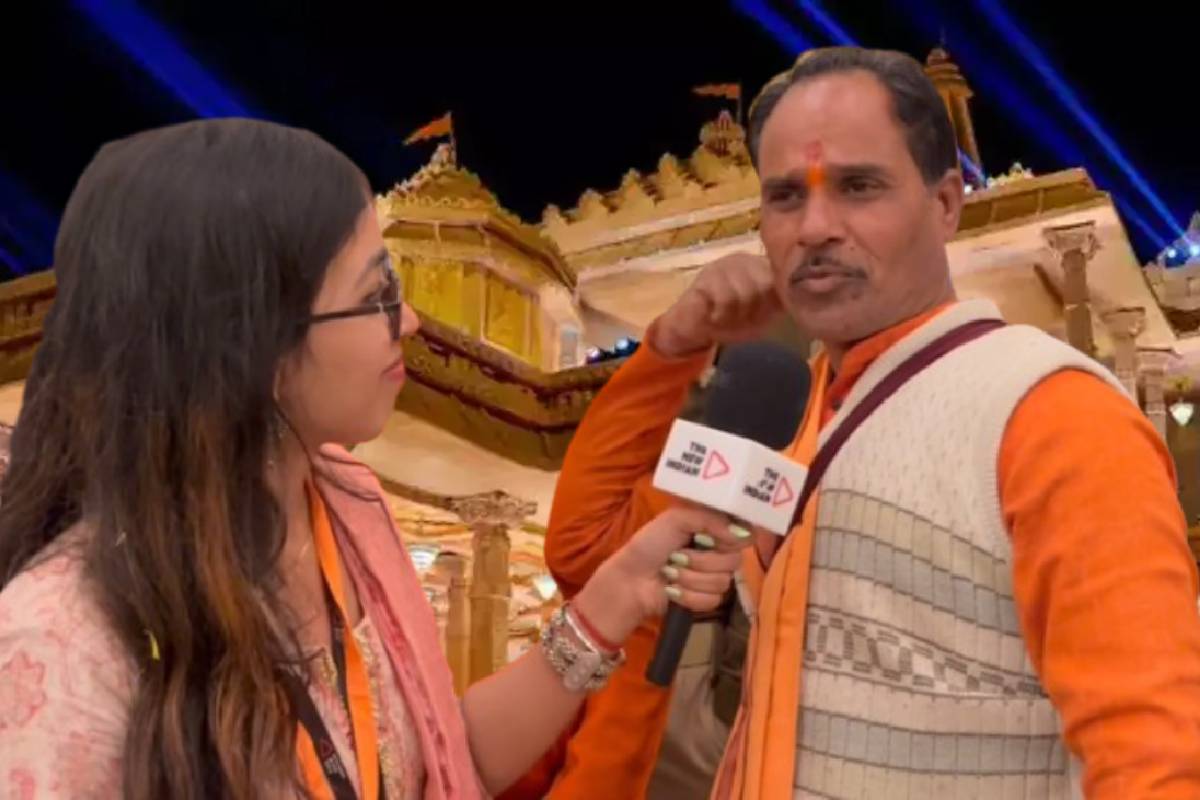AYODHYA: January 22, 2024, etched itself as a date of unprecedented significance for India with the consecration of the Ram temple. Deepak Nagpat, a Karsevak hailing from Suwasra in Madhya Pradesh, vividly recounted his harrowing experience during the Babri Masjid demolition in the 1980s.
At the tender age of 18, Deepak actively participated in the historic episode, sharing his harrowing tale against the backdrop of sentiments within the newly consecrated Ram mandir in Ayodhya.
GROUND REPORT| The New Indian’s team brings you exclusive visuals from #AyodhyaRamMandir ahead of #RamMandirPranPrathistha ceremony.
Reports: @SubhadraSrivas5 & @urvashikhona pic.twitter.com/k40OQHEBs0
— The New Indian (@TheNewIndian_in) January 22, 2024
The New Indian ventured inside the temple, capturing the essence of the historic day through the second aarti and delving into the sentiments of devotees within the temple premises.
Talking to TNI, Deepak Nagpat, shared that as Uma Bharati’s call for “Akramaan” resonated, chaos erupted, and lathi charges descended upon the Karsevaks. Deepak vividly describes the frantic search for refuge amid the clashes. Deepak narrated, “All of us ran to find refuge and save our lives. A saint helped me in hiding, and I remained concealed throughout the night.”
“There were cries like ‘Tel lagao Dabur ka, naam mita do Babar ka’, and all of us Karsevaks, started destroying Babri masjid brick-by-brick,” Nagpat recounted.
ALSO READ: Devotees flock to Ayodhya’s Ram Mandir as grand temple opens doors
Witnessing fatalities and numerous bodies, he expressed the profound impact the day had on him. With the saint’s assistance, he received sustenance, and the next day, he made a dash to catch a train back to his town in Madhya Pradesh.
Describing the chaotic scenes at the train station, where even the engine’s top was occupied by Karsevaks, he stated that despite the challenges, he reached Lucknow and caught the Awadh Express.
Reflecting on the current scenario, Deepak emotionally stated, “People will say even after 1,000 years that PM Modi built this temple.” Tearfully, he shared his physical ailment, mentioning that hunger and pain doesn’t bother him.
“I don’t feel hunger or thirst; my hands and feet don’t ache. I arrived in Ayodhya on January 14, and before that, I was battling a fever. But as soon as I reached here, all discomfort vanished,” he shared.
ALSO READ: Devotees flock to Ayodhya’s Ram Mandir as grand temple opens doors
Urging others to emulate the struggle, Deepak said, “We have fought hard, now you must struggle the same way for Mathura if the opportunity arises. Do not let it go.”
Expressing his admiration for his father’s efforts, Deepak’s son, Ajay Nagpat stated, “I am immensely proud of my father for the struggles he endured, which have allowed me to witness this day.”
He revealed that when his father came to Ayodhya in 1992, he brought back a brick as a symbol of demolishing the Babri Masjid. That brick remains a cherished relic in the Nagpat family.

